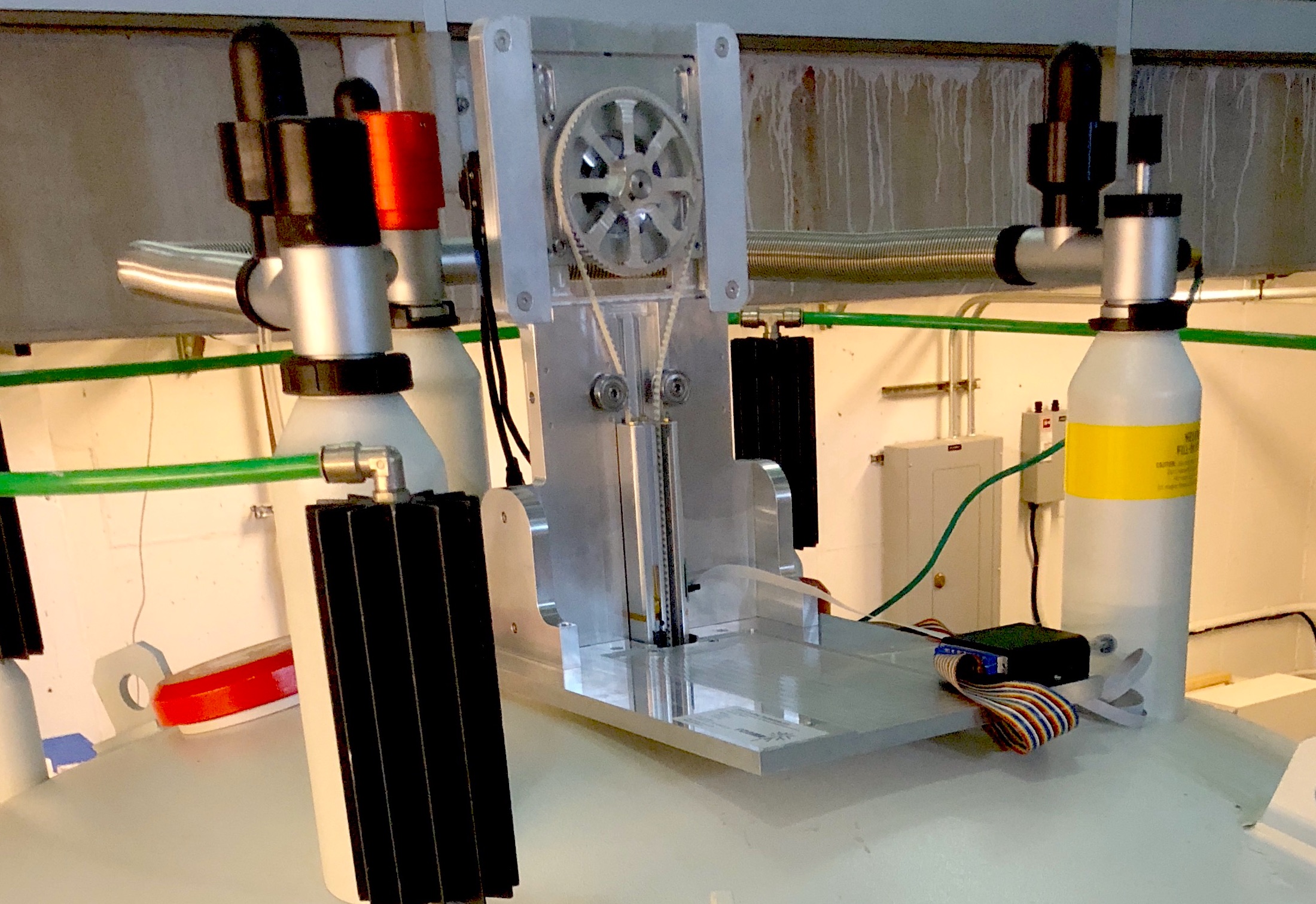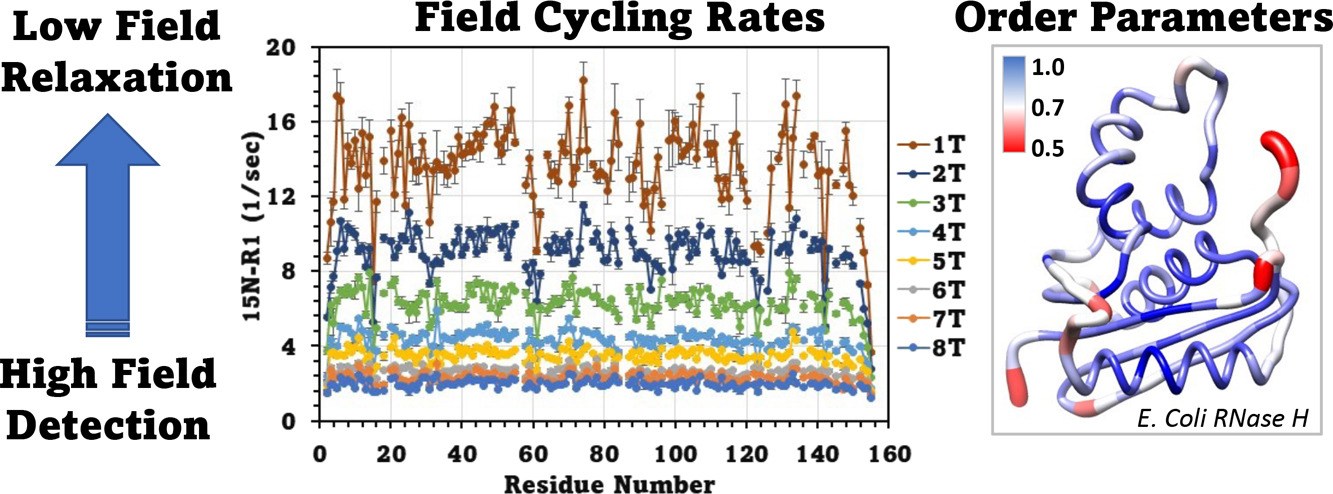Technical Note: Independent Validation of Hardware-Driven Signal Stability in High-Field Relaxometry
A peer-reviewed study confirms reproducibility without model compensation

Abstract
An independent research team from New York Structrual Biology Center (NYSBC) has recently published a peer-reviewed study in the Journal of Magnetic Resonance (2025), demonstrating high-field relaxometry using the Field-Cycling Shuttle System by Field Cycling Technology (DOI: 10.1016/j.jmr.2025.107989).
Their experiments, conducted between 1 T and 700 MHz (16.44 T), achieved full steady-state operation with rapid, mechanically stable shuttling. Importantly, all relaxation data were obtained without post-acquisition modeling, reconstruction, or machine-learning correction.
The results revealed highly reproducible mono-exponential relaxation curves, confirming that under precise mechanical control, the magnetic-field cycling process produces direct, physically interpretable signal decays suitable for quantitative analysis.
This study provides third-party validation that signal integrity in field-cycling NMR can be realized through robust engineering design, not computational compensation.
By minimizing transient oscillation and ensuring true mechanical settle before acquisition, the system enables reliable high-field relaxometry without algorithmic post-processing.

Key Takeaways
- Verified reproducibility: Relaxation profiles consistent across field cycles
- No algorithmic correction required: Experimental data stand alone
- Peer-reviewed validation: Published in Journal of Magnetic Resonance, 2025
- Hardware-driven accuracy: Stability achieved through motion-control design
Introduction
Relaxometry has emerged as a key method in nuclear magnetic resonance (NMR) to study biomolecular dynamics on the nanosecond-to-microsecond timescale.
As the technique continues to expand, so too does the demand for rigorous, interpretable, and reproducible signal acquisition.
In high-field field-cycling experiments, the technical ability to move a sample between magnetic fields has enabled access to broader relaxation profiles. Yet, the precision of those relaxation measurements often hinges on signal integrity, a factor that is sometimes compromised by subtle physical disturbances during sample shuttling.
The Broader Challenge: Movement-Induced Artifacts
Across many systems, even small residual vibrations or incomplete mechanical settling after rapid shuttling can lead to non-ideal measurement conditions. Such effects may subtly distort relaxation curves, reducing the reliability of extracted dynamic parameters.
These challenges have inspired a variety of post-acquisition correction strategies, including numerical modeling, integration of field trajectories, and machine-learning-based inference.
While these solutions reflect the community’s ingenuity, they also point to a deeper truth: when signal distortion arises during measurement, we are forced to recover the true dynamics indirectly.
A Different Approach: Stability at the Source
What if, instead of compensating for imperfections downstream, we could suppress them at the source?
Recent work demonstrates that when a hardware system ensures rapid, vibration-damped sample delivery and immediate signal acquisition, relaxation curves are often cleanly monoexponential. This stability enables the use of analytically tractable steady-state models that simplify data interpretation and reduce computational overhead.
This field-cycling shuttling system has been validated in recent study of JMR 2025, where dynamic parameters (e.g., S2, τc, τe, Rex) were directly extracted with high precision, without requiring integration over the sample's trajectory or post hoc correction. This is more than a hardware achievement: it reflects an analytical philosophy: prioritize input integrity to enable interpretable output.
Enabling Better Science, Together
We recognize that there are multiple strategies to address the complexities of field-cycling relaxometry. While some platforms emphasize downstream correction, we advocate for signal-first stability as a complementary, and in many cases, preferable path.
By ensuring mechanical damping and immediate acquisition readiness, we open the door to straightforward analysis pipelines, increased reproducibility, and confidence in extracted biophysical insights.
If you are exploring high-resolution relaxometry and value physical interpretability, we invite you to consider how signal stability can elevate your science.
To learn more about the hardware architecture used in this study, visit the Field-Cycling Shuttle System overview.
Conclusion
This independent validation underscores a central principle in high-field relaxometry:
when the acquisition hardware is intrinsically stable, data integrity follows naturally. As field-cycling methods continue to evolve, hardware precision will remain the foundation of credible NMR relaxometry.
This technical white paper summarizes independent findings published in the Journal of Magnetic Resonance (2025), confirming the reproducibility and mechanical stability of high-field relaxometry using the Field-Cycling Shuttle System.